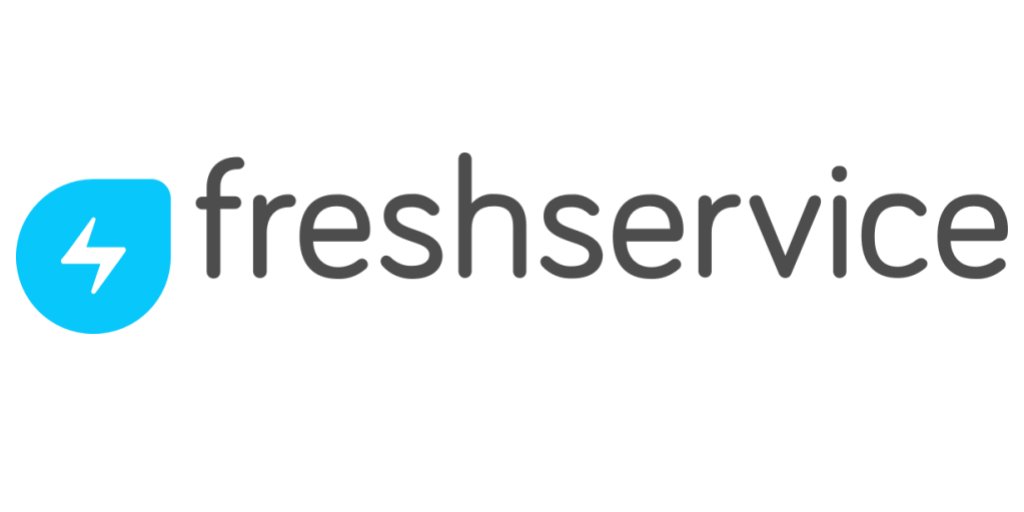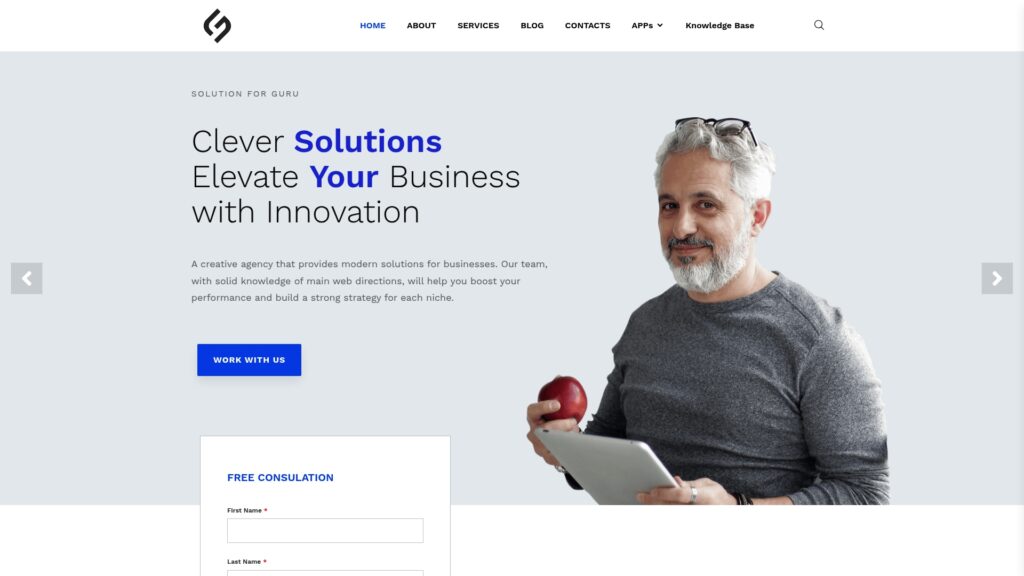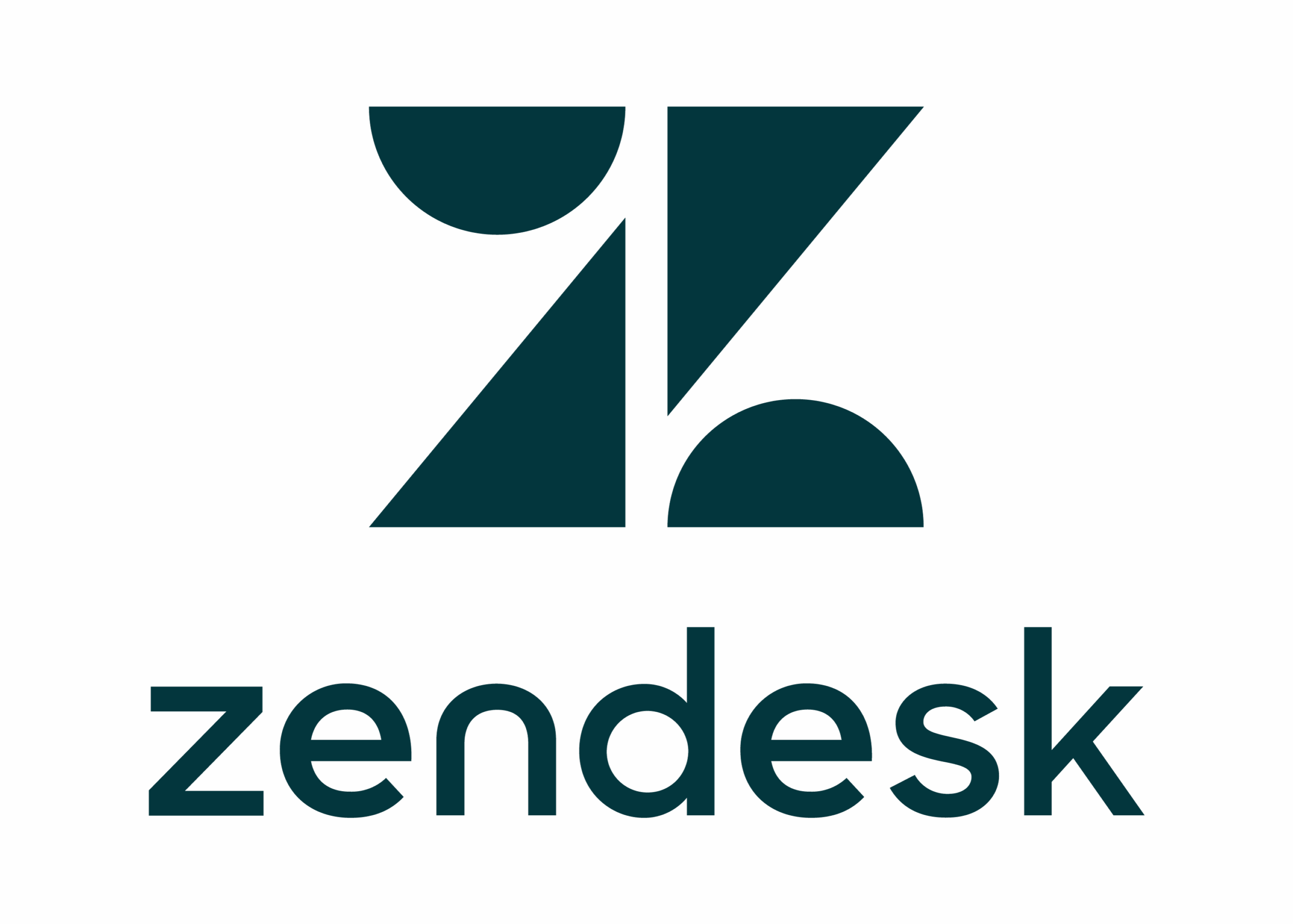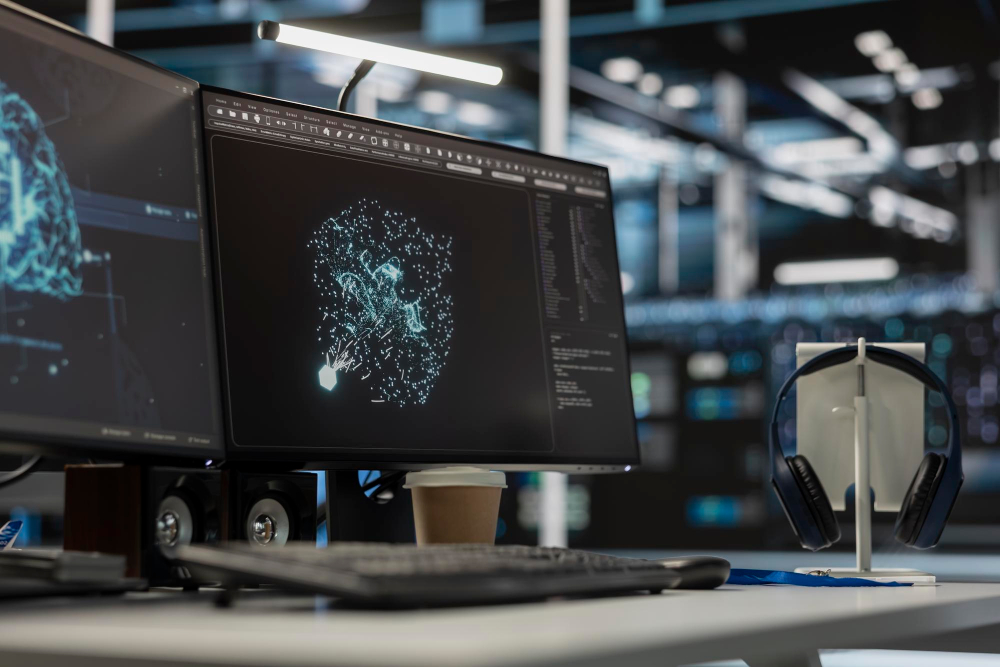How Does ITSM Enhance Customer Experience and Internal Collaboration?

In today’s interconnected business landscape, the quality of customer experiences and the effectiveness of internal collaboration directly determine organizational success. Companies that excel in these areas consistently outperform competitors, retain customers more effectively, and foster innovation through seamless teamwork. Surprisingly, one of the most powerful enablers of both exceptional customer experiences and robust internal collaboration is IT Service Management (ITSM)—a discipline traditionally associated primarily with technical support and infrastructure management.
Modern ITSM has evolved far beyond its origins as a framework for managing IT incidents and service requests. Today’s sophisticated ITSM platforms serve as comprehensive collaboration hubs, customer experience engines, and strategic business enablers. This article explores the multifaceted ways ITSM enhances both customer-facing interactions and internal teamwork, providing actionable insights for organizations seeking competitive advantages through service excellence.
Table of Contents
- Quick Summary
- What Are ITSM, Customer Experience, and Internal Collaboration, and How Are They Related?
- How Do Leading ITSM Platforms Support Customer Experience and Collaboration?
- Why Does ITSM Create Seamless Omnichannel Customer Experiences?
- How Does ITSM Enable Faster Response Times and Resolution?
- What Role Does Self-Service Play in Customer Satisfaction?
- Why Is Knowledge Management Critical for Both Customers and Teams?
- How Does ITSM Support Remote and Hybrid Collaboration?
- Summing up
- Frequently Asked Questions
- Partnership with Solution for Guru
Quick Summary
ITSM platforms have become indispensable tools for organizations seeking to deliver exceptional customer experiences while fostering effective internal collaboration. By providing unified platforms for service delivery, communication, and knowledge sharing, modern ITSM solutions break down traditional silos and create seamless experiences for both external customers and internal employees.
Leading platforms like Freshservice, ManageEngine, and Zendesk offer comprehensive capabilities that streamline customer interactions through omnichannel support, intelligent routing, and self-service options. Simultaneously, these platforms enhance internal collaboration by centralizing communication, automating workflows, and providing transparent visibility into ongoing work. The result is faster resolution times, higher satisfaction scores, and more productive teams that work together effectively regardless of location or department.
Furthermore, ITSM’s emphasis on knowledge management ensures that valuable insights and solutions are captured, organized, and made accessible to everyone who needs them. Advanced analytics capabilities enable organizations to identify improvement opportunities, measure the impact of initiatives, and continuously refine both customer experiences and collaborative processes. Organizations that leverage modern ITSM strategically gain significant competitive advantages through superior service delivery and organizational agility.
What Are ITSM, Customer Experience, and Internal Collaboration, and How Are They Related?
Understanding ITSM Fundamentals
IT Service Management (ITSM) encompasses the policies, processes, and practices organizations use to design, deliver, manage, and improve IT services. More than just a technical framework, ITSM represents a strategic approach that aligns technology services with business objectives while ensuring quality, efficiency, and continuous improvement. The discipline has its roots in frameworks like ITIL (Information Technology Infrastructure Library), which provides best practices for service management across various domains.
At its core, ITSM focuses on delivering value to customers—whether those customers are external clients or internal employees. This value orientation distinguishes modern ITSM from traditional IT operations, which often emphasized technical excellence without sufficient consideration for user needs and business outcomes. Today’s ITSM practitioners recognize that technology exists to enable people and processes, not as an end in itself.
Defining Customer Experience in Context
Customer experience (CX) refers to the cumulative perception customers develop through all interactions with an organization across their entire journey. Every touchpoint—from initial awareness through purchase, usage, support, and renewal—contributes to the overall experience. Exceptional customer experiences are characterized by ease, efficiency, personalization, and emotional resonance, while poor experiences result from friction, inconsistency, confusion, and frustration.
In the context of ITSM, customer experience extends to both external customers purchasing products or services and internal employees who rely on IT services to perform their jobs. Organizations increasingly recognize that employee experience directly impacts customer experience—dissatisfied, unproductive employees cannot consistently deliver exceptional service to external customers. Consequently, modern ITSM strategies prioritize both internal and external customer satisfaction equally.
Internal Collaboration Essentials
Internal collaboration refers to how teams, departments, and individuals work together within an organization to achieve common goals. Effective collaboration requires clear communication, shared understanding of objectives, coordinated workflows, mutual trust, and appropriate tools that facilitate cooperation rather than impede it. When collaboration functions well, organizations benefit from faster decision-making, reduced duplication of effort, enhanced innovation, and improved employee satisfaction.
Conversely, poor collaboration manifests in organizational silos where departments operate independently with limited communication or coordination. These silos create inefficiencies, inconsistent customer experiences, knowledge fragmentation, and employee frustration. Breaking down silos and fostering collaborative cultures has become a strategic priority for forward-thinking organizations across all industries.
The Interconnection: How ITSM Links CX and Collaboration
The relationship between ITSM, customer experience, and internal collaboration is both profound and bidirectional. ITSM platforms serve as the technological foundation that enables exceptional customer experiences while simultaneously facilitating the internal collaboration necessary to deliver those experiences consistently. When IT services function smoothly, employees can focus on serving customers rather than wrestling with technical obstacles. When collaboration tools and processes work effectively, teams can coordinate seamlessly to resolve customer issues quickly and comprehensively.
Moreover, ITSM provides the structure, visibility, and accountability mechanisms that ensure customer interactions are handled professionally regardless of complexity or which team members are involved. Through features like ticket routing, escalation workflows, knowledge bases, and communication tools, ITSM platforms orchestrate the collaboration required to address customer needs effectively. This orchestration happens behind the scenes, invisible to customers who simply experience fast, accurate, personalized service.
Additionally, the data and insights generated through ITSM systems enable organizations to understand both customer needs and internal collaboration effectiveness. Analytics reveal patterns in customer inquiries, identify bottlenecks in service delivery, highlight knowledge gaps, and surface opportunities for process improvement. These insights drive continuous enhancement of both customer experiences and collaborative practices, creating virtuous cycles of improvement.
How Do Leading ITSM Platforms Support Customer Experience and Collaboration?
Freshservice: User-Centric Design for Modern Workforces

Freshservice has distinguished itself by prioritizing user experience in every aspect of its platform design. The solution offers an intuitive, modern interface that requires minimal training for both support agents and end-users. This accessibility directly translates to better customer experiences, as agents can navigate the system efficiently without technical friction, focusing their attention on customer needs rather than software complexity.
For customer experience enhancement, Freshservice provides comprehensive multichannel support capabilities, enabling customers to reach out via email, phone, chat, or self-service portals according to their preferences. The platform’s intelligent ticket routing ensures requests reach the most qualified agents automatically, reducing response times and improving first-contact resolution rates. Furthermore, Freshservice’s robust knowledge base and AI-powered chatbot enable customers to find solutions independently, often resolving issues instantly without waiting for human intervention.
Regarding internal collaboration, Freshservice excels through its integrated communication features that enable team members to discuss tickets, share insights, and coordinate responses without leaving the platform. The solution’s @mentions, private notes, and collaborative ticket views ensure relevant stakeholders remain informed and engaged throughout the resolution process. Additionally, Freshservice’s workflow automation reduces manual handoffs and coordination overhead, allowing teams to focus on value-adding activities rather than administrative tasks.
Freshservice also extends beyond traditional IT support through Enterprise Service Management (ESM) capabilities that apply ITSM principles to HR, facilities, finance, and other departments. This unified approach creates consistent experiences for internal customers regardless of which department they’re interacting with while fostering cross-functional collaboration through shared processes and tools.
ManageEngine: Comprehensive Integration for Complex Environments

ManageEngine ServiceDesk Plus represents a comprehensive ITSM solution designed for organizations with complex requirements and diverse technology ecosystems. The platform’s extensive feature set and deep customization capabilities enable organizations to tailor customer experiences and collaborative workflows precisely to their unique needs and preferences.
For customer experience, ManageEngine provides powerful multichannel capabilities, advanced SLA management, and sophisticated ticket categorization that ensures customers receive appropriate attention based on request urgency and business impact. The platform’s asset management integration gives agents complete context about customer environments, enabling more accurate diagnostics and faster resolutions. Moreover, ManageEngine’s customer portal can be customized extensively to reflect organizational branding and specific customer journey requirements.
Internal collaboration benefits significantly from ManageEngine’s comprehensive integration with broader IT management tools including network monitoring, endpoint management, and security solutions. This integration provides unified visibility across the entire IT infrastructure, enabling teams to identify relationships between incidents, understand root causes, and coordinate responses effectively. The platform’s project management features facilitate coordination of major initiatives requiring cross-functional collaboration.
ManageEngine‘s knowledge management capabilities support both customer self-service and internal collaboration through comprehensive article repositories, advanced search functionality, and content versioning. Teams can document solutions, share best practices, and ensure institutional knowledge remains accessible even as personnel change. Furthermore, the platform’s reporting and analytics provide visibility into collaboration effectiveness, identifying bottlenecks and opportunities for process optimization.
Zendesk: Omnichannel Excellence and Conversation-Driven Support

Zendesk has built its reputation on delivering exceptional customer service capabilities, making it particularly well-suited for organizations prioritizing customer experience alongside employee service management. The platform’s conversation-driven approach transforms traditional ticketing into natural, continuous dialogues that feel more personal and less transactional to customers.
Zendesk’s omnichannel architecture represents a significant advantage for customer experience, enabling seamless conversations across email, chat, phone, social media, messaging apps, and self-service portals. Customers can switch channels mid-conversation without losing context or repeating information, creating frictionless experiences that reflect modern communication preferences. The platform’s unified agent workspace presents complete customer history and context regardless of which channel initiated the interaction.
For internal collaboration, Zendesk offers robust team coordination features including shared ticket views, internal notes, side conversations, and collaborative problem-solving tools. The platform’s integration marketplace provides thousands of apps and connectors that extend collaboration capabilities to include external tools teams already use, creating unified workflows that span multiple systems. Additionally, Zendesk’s automation and workflow capabilities reduce manual coordination requirements while ensuring consistent processes.
Zendesk‘s analytics and reporting tools provide comprehensive insights into both customer satisfaction metrics and team performance indicators. Organizations can track key experience metrics like Customer Satisfaction (CSAT), Net Promoter Score (NPS), and Customer Effort Score (CES) alongside operational metrics such as resolution times and ticket volumes. These insights enable data-driven decisions about how to enhance both customer experiences and collaborative effectiveness.
Comparison table
Why Does ITSM Create Seamless Omnichannel Customer Experiences?

Meeting Customers Where They Are
Modern customers expect to interact with organizations through their preferred communication channels rather than being forced into rigid, inconvenient options. Some customers prefer email for its asynchronous nature and documentation trail, while others want immediate responses through live chat or phone support. Younger demographics increasingly expect social media and messaging app integration, while self-service portals appeal to those seeking immediate answers without human interaction.
ITSM platforms enable organizations to meet these diverse preferences through comprehensive omnichannel capabilities. Rather than maintaining separate systems for each communication channel, modern solutions like Zendesk unify all interactions within a single platform. This unification ensures that customer information, conversation history, and contextual details remain accessible regardless of which channel customers use for any particular interaction.
Maintaining Context Across Channels
One of the most frustrating customer experiences occurs when individuals must repeat information because systems don’t share context across channels. A customer might start a conversation via email, follow up through chat, and eventually call—but if each interaction starts from scratch, the experience feels disjointed and inefficient. This repetition wastes customer time, creates frustration, and signals that the organization doesn’t value their experience.
ITSM platforms solve this challenge by maintaining unified customer records that capture all interactions across every channel. When a customer switches from email to chat, agents immediately see the complete conversation history, previous issues, resolution patterns, and relevant customer details. Freshservice and ManageEngine both provide this unified view, enabling agents to continue conversations seamlessly regardless of channel changes.
Intelligent Channel Routing
Beyond simply supporting multiple channels, advanced ITSM platforms intelligently route customer interactions based on various factors including customer preferences, request complexity, agent availability and expertise, and channel-specific considerations. For example, technical issues requiring screen sharing might automatically route to phone or video channels, while simple account questions route to chat for quick resolution.
This intelligent routing optimizes both customer experience and operational efficiency. Customers receive service through the most appropriate channel for their specific needs, while organizations allocate resources effectively based on request characteristics. ManageEngine’s sophisticated routing rules enable highly customized workflows that reflect organizational priorities and customer segmentation strategies.
Self-Service Integration
Omnichannel strategies must include robust self-service options that empower customers to resolve issues independently when preferred. Modern ITSM platforms integrate self-service portals, knowledge bases, community forums, and AI-powered chatbots into the broader omnichannel ecosystem. These self-service options don’t exist in isolation but connect seamlessly with assisted channels when customers need additional help.
For instance, a customer might search a Freshservice knowledge base, find an article that doesn’t fully address their issue, and initiate a chat conversation—all without leaving the portal interface. The chat agent sees which articles the customer reviewed, understands what solutions were already attempted, and provides targeted assistance that builds on self-service efforts rather than duplicating them. This integration creates efficient, personalized experiences that respect customer time and intelligence.
How Does ITSM Enable Faster Response Times and Resolution?
Intelligent Automation and Ticket Routing
Speed matters profoundly in customer service. Studies consistently demonstrate that customers value quick responses even more than perfect first-time resolution. When customers must wait hours or days for initial responses, satisfaction plummets regardless of eventual outcomes. Conversely, immediate acknowledgment and rapid progress create positive impressions even when resolution requires time.
ITSM platforms dramatically accelerate response times through intelligent automation that triages incoming requests, categorizes them accurately, assigns appropriate priorities, and routes to qualified agents—all within seconds of submission. Zendesk’s automated workflows can analyze ticket content using machine learning, predict appropriate categories and priorities, and assign to specific agents or teams based on expertise matching and current workload.
This automation eliminates the delays inherent in manual ticket management where requests sit in general queues awaiting human review and assignment. Furthermore, automation ensures consistency—every ticket receives appropriate attention based on objective criteria rather than subjective human judgment that may vary based on agent experience or current stress levels.
SLA Management and Escalation
Service Level Agreements (SLAs) define the response and resolution timelines customers can expect for various request types. Effective SLA management ensures organizations meet these commitments consistently, building customer trust and satisfaction. However, meeting SLAs requires sophisticated tracking, alerting, and escalation capabilities that prevent commitments from being forgotten or deprioritized.
ManageEngine provides comprehensive SLA management features that automatically track time elapsed against defined targets, send escalation alerts when tickets risk breaching SLAs, and trigger automatic escalations to management when thresholds are exceeded. These capabilities ensure accountability and prevent issues from slipping through cracks due to oversight or workload pressures.
Moreover, SLA management features enable organizations to differentiate service levels based on customer segments, issue priorities, or contractual obligations. Premium customers might receive faster response guarantees, while critical system outages trigger immediate escalation regardless of when they occur. This flexibility enables organizations to align service delivery with business priorities and customer expectations.
Knowledge Base Integration for Faster Diagnosis
Agent efficiency directly impacts resolution speed. When agents must search through scattered documentation, contact colleagues for assistance, or experiment with potential solutions, resolution times extend significantly. Conversely, when relevant knowledge appears instantly within the agent workspace, diagnosis and resolution occur much faster.
Freshservice integrates knowledge base content directly into the ticket interface, automatically suggesting relevant articles based on ticket content analysis. As agents type ticket descriptions or responses, the system displays potentially helpful articles that might contain solutions. This proactive knowledge delivery accelerates resolution by surfacing institutional wisdom precisely when needed without requiring explicit searches.
Furthermore, knowledge integration reduces the variation in service quality that occurs when different agents possess different expertise levels. Junior agents gain access to the same knowledge resources as senior specialists, enabling more consistent service delivery across the entire support team. This democratization of knowledge improves both speed and quality while reducing dependence on specific individuals.
Real-Time Collaboration Tools
Complex issues often require input from multiple team members or departments to resolve effectively. Traditional approaches involving email threads, phone calls, and sequential handoffs introduce significant delays as requests move between stakeholders. Each handoff consumes time for context transfer, and asynchronous communication methods like email create lag as participants wait for responses.
Modern ITSM platforms address this challenge through integrated real-time collaboration tools that enable simultaneous participation from all relevant stakeholders. Agents can @mention colleagues within tickets to request input, initiate group chat conversations about specific issues, or even launch video conferences—all without leaving the ITSM platform. Zendesk‘s side conversation feature enables agents to reach out to internal experts or external partners for assistance while keeping customers informed about progress.
This real-time collaboration compresses timelines dramatically by enabling parallel rather than sequential work. Multiple experts can review issues simultaneously, debate solutions in real-time, and reach consensus quickly. The resulting faster resolution directly enhances customer experience while improving team productivity and satisfaction.
What Role Does Self-Service Play in Customer Satisfaction?
Empowering Customers with Immediate Solutions
The paradox of customer service is that sometimes the best service involves no direct interaction at all. Many customers prefer resolving issues independently rather than contacting support, particularly for simple questions or common problems. Self-service options that enable immediate resolution without waiting for agent availability deliver exceptional experiences while reducing operational costs.
Comprehensive knowledge bases form the foundation of effective self-service strategies. These repositories contain articles addressing common questions, troubleshooting guides for typical issues, how-to instructions for standard tasks, and best practice recommendations. When properly organized with intuitive navigation and powerful search capabilities, knowledge bases enable customers to find solutions quickly and independently.
ManageEngine‘s knowledge management features support rich content including text, images, videos, and interactive elements that enhance understanding and usability. Articles can be organized hierarchically, tagged with relevant keywords, and linked to related content for comprehensive coverage. Furthermore, analytics reveal which articles customers find most helpful, which searches fail to produce results, and where knowledge gaps exist—insights that drive continuous improvement.
Intelligent Search and AI-Powered Recommendations
The effectiveness of self-service depends heavily on search quality. If customers cannot find relevant articles quickly, they abandon self-service attempts and contact support, negating the intended benefits. Traditional keyword-based search often disappoints users who may not know precise technical terminology or who phrase questions differently than article authors anticipated.
Modern ITSM platforms leverage artificial intelligence to dramatically improve search effectiveness. These AI-powered systems understand natural language queries, recognize synonyms and related concepts, account for common misspellings, and learn from user behavior to continuously improve results. Freshservice‘s intelligent search analyzes semantic meaning rather than just matching keywords, delivering relevant results even when customer queries don’t perfectly align with article language.
Additionally, AI enables proactive content recommendations based on context. When customers view specific product pages, the system might suggest relevant how-to articles. When they begin typing a support request, suggested articles appear before they even submit tickets. These proactive recommendations often resolve issues before customers invest significant time or effort, creating particularly positive experiences.
Reducing Ticket Volumes Through Deflection
From an operational perspective, effective self-service generates substantial efficiency gains through ticket deflection—preventing ticket creation by enabling self-resolution. Every issue resolved through self-service represents a ticket that doesn’t require agent attention, freeing capacity for more complex problems that genuinely need human expertise.
Organizations implementing comprehensive self-service typically see deflection rates of 20-40% or higher, meaning significant percentages of potential tickets never materialize. These reductions translate directly to cost savings, improved agent productivity, and enhanced scalability. As organizations grow, self-service enables them to support larger customer bases without proportionally expanding support teams.
Zendesk‘s Answer Bot represents an advanced approach to deflection, proactively suggesting knowledge base articles to customers as they begin creating tickets. Many customers find solutions through these suggestions and abandon ticket creation, while others review suggested content before submitting more focused requests that include context about already-attempted solutions. Both outcomes improve efficiency while respecting customer autonomy and intelligence.
Building Communities for Peer Support
Beyond traditional knowledge bases, community forums represent another powerful self-service dimension. Customer communities enable peer-to-peer support where experienced users help newcomers, share tips and tricks, discuss best practices, and collectively solve problems. These communities often develop robust knowledge ecosystems that complement official documentation with real-world perspectives and creative solutions.
ITSM platforms increasingly incorporate community features that integrate with broader service ecosystems. Community discussions appear in search results alongside official knowledge articles, community members can escalate unresolved issues to official support channels, and support agents can participate in community discussions to provide authoritative guidance. This integration creates comprehensive self-service environments that leverage both official resources and collective user wisdom.
Why Is Knowledge Management Critical for Both Customers and Teams?

Capturing Institutional Wisdom
Every organization accumulates vast amounts of knowledge through daily operations—solutions to problems, answers to questions, best practices, lessons learned, and creative workarounds. Unfortunately, much of this valuable knowledge exists only in individual minds rather than documented formats accessible to others. When knowledgeable individuals are unavailable, leave the organization, or simply forget details over time, this wisdom disappears, forcing others to rediscover solutions repeatedly.
Effective knowledge management systematically captures, organizes, and preserves institutional wisdom, transforming it from personal knowledge into organizational assets. ITSM platforms facilitate this capture by making documentation easy and integrating it naturally into service delivery workflows. When agents resolve tickets, they can convert solutions into knowledge articles with minimal effort. ManageEngine‘s knowledge authoring tools enable rapid article creation directly from ticket resolution notes, complete with formatting, screenshots, and relevant tags.
Moreover, crowdsourced knowledge contribution approaches recognize that valuable insights originate from many sources, not just designated authors. Platforms that enable any team member to contribute articles, suggest improvements to existing content, or vote on article helpfulness leverage collective intelligence to build comprehensive knowledge repositories that reflect diverse perspectives and experiences.
Ensuring Consistency Across Teams
Service consistency represents a critical customer experience dimension. Customers expect similar issues to receive similar responses regardless of which agent handles their requests or when they contact support. Inconsistency creates confusion, damages trust, and suggests organizational dysfunction. Yet achieving consistency proves challenging when different agents possess different knowledge, experience, and problem-solving approaches.
Knowledge management directly addresses consistency challenges by documenting standard solutions and best practices that all agents can reference. Rather than each agent developing individual approaches, teams align around proven methods captured in knowledge articles. Freshservice‘s knowledge integration within ticket interfaces ensures agents see relevant standard solutions during ticket resolution, encouraging consistent application of organizational best practices.
Furthermore, knowledge articles establish quality standards and expectations. New agents gain clarity about organizational norms and approaches, accelerating their learning curves. Experienced agents benefit from documented solutions for infrequent issues they may not remember clearly. The entire team operates from shared understanding, reducing variation in service quality and creating more predictable customer experiences.
Enabling Self-Service and Deflection
As discussed earlier, knowledge management forms the foundation of effective self-service strategies. Every well-written knowledge article potentially prevents multiple support tickets by enabling customers to resolve issues independently. The relationship between knowledge management and self-service creates a virtuous cycle – successful self-service demonstrates knowledge value, encouraging additional content creation that further enhances self-service effectiveness.
Organizations that prioritize knowledge management consistently achieve higher self-service adoption rates and greater ticket deflection. Zendesk customers with comprehensive knowledge bases typically deflect 30-50% of potential tickets through self-service, dramatically reducing support costs while improving customer satisfaction. These benefits compound over time as knowledge repositories grow and mature through continuous contribution and refinement.
Facilitating Onboarding and Training
Employee onboarding and continuous training represent significant investments for service organizations. New agents require extensive education about products, processes, policies, and problem-solving techniques before they can work independently. Ongoing training ensures existing team members remain current with evolving offerings, updated procedures, and emerging best practices. Traditional training approaches relying heavily on classroom instruction or one-on-one mentoring prove time-consuming, expensive, and difficult to scale.
Knowledge management supplements traditional training by providing self-paced learning resources accessible whenever needed. New agents can study knowledge articles to understand common issues and standard solutions, accelerating their readiness for independent work. Experienced agents can review articles about new features or updated processes on-demand rather than attending scheduled training sessions. ManageEngine‘s knowledge base organization supports learning paths and progressive disclosure that guide newcomers from basic to advanced topics systematically.
Additionally, knowledge articles serve as reference resources that agents consult during active ticket resolution, supporting continuous learning in practical contexts. Rather than trying to memorize everything during initial training, agents learn that knowledge resources exist and develop confidence accessing them efficiently. This approach recognizes that modern knowledge work emphasizes knowing how to find information rather than memorizing details.
How Does ITSM Support Remote and Hybrid Collaboration?
Enabling Access From Anywhere
Remote and hybrid work models require that employees can access necessary tools and information from anywhere with internet connectivity. Unlike traditional on-premises systems requiring VPN connections or physical presence, cloud-based ITSM platforms provide seamless access through web browsers and mobile applications regardless of location. This accessibility ensures service delivery continuity whether team members work from offices, homes, coffee shops, or while traveling.
Zendesk‘s cloud-native architecture exemplifies this accessibility, delivering consistent functionality and performance regardless of user location or device. Agents can handle tickets from smartphones during commutes, managers can review dashboards from tablets during off-hours, and customers can submit requests from any device conveniently available. This universal accessibility eliminates location as a barrier to productivity or customer service.
Moreover, cloud-based platforms ensure all users always access current information rather than outdated cached data. When one agent updates a ticket, all other stakeholders see changes immediately upon refreshing their views. Knowledge base updates appear instantly to everyone searching for information. This real-time synchronization prevents the confusion and errors that occur when distributed teams work from inconsistent data.
Supporting Asynchronous Workflows
Different time zones, flexible schedules, and personal preferences mean distributed teams rarely work simultaneously. Collaboration strategies built around assumptions of real-time interaction fail in these environments, creating bottlenecks when individuals in different locations or working different hours cannot coordinate effectively. Asynchronous workflows that enable progress without requiring simultaneous participation become essential.
ITSM platforms inherently support asynchronous collaboration through persistent ticket threads that maintain complete context across any time span. An agent in New York can work on a ticket during morning hours, document progress and questions within the ticket, and assign to a specialist in Singapore who addresses it during their workday. The Singapore specialist sees complete history, contributes their expertise, and routes back to New York—all without a single real-time conversation.
ManageEngine‘s workflow capabilities can be designed explicitly for asynchronous operation, with automated handoffs occurring based on completion of preceding steps rather than manual coordination. Teams define clear responsibility boundaries, completion criteria, and escalation conditions, enabling smooth progress even when participants never overlap temporally. This approach maximizes productivity by eliminating waiting time while ensuring accountability through transparent tracking.
Facilitating Communication Across Zones
Despite asynchronous work advantages, some situations genuinely require real-time interaction—complex technical discussions, urgent escalations, or collaborative problem-solving sessions. For distributed teams spanning time zones, scheduling such interactions challenges participants who may need to work outside normal hours to accommodate colleagues in different locations. This scheduling burden creates tension and can lead to important conversations being postponed indefinitely.
ITSM platforms can integrate with scheduling and video conferencing tools to streamline real-time collaboration when needed. Freshservice‘s integration capabilities connect with calendar systems to identify mutually available times, and with conferencing platforms to launch video meetings directly from ticket interfaces. When urgent issues require immediate collaboration, these integrations reduce friction and enable quick coordination despite geographic distribution.
Additionally, recorded video conferences can be attached to tickets for reference by team members who couldn’t attend synchronously. This documentation ensures inclusive collaboration where valuable discussions inform all relevant stakeholders regardless of their ability to participate in real-time. The combination of asynchronous and synchronous modes, both documented within central ITSM platforms, creates comprehensive collaboration ecosystems suitable for global distributed teams.
Maintaining Culture and Connection
Beyond operational collaboration, remote work challenges organizational culture and interpersonal connection. The informal interactions that build relationships and foster community in physical offices don’t occur naturally in distributed environments. Without deliberate effort, remote teams can feel isolated, disconnected from broader organizations, and unclear about company values and directions.
ITSM platforms can support cultural connection through features like team activity feeds that share accomplishments and milestones, recognition systems that celebrate excellent work, and discussion forums that enable informal conversation alongside formal service delivery. While these features extend beyond traditional ITSM scope, leading platforms recognize that effective collaboration requires more than operational workflows—it requires human connection and cultural cohesion.
Summing up
The relationship between ITSM, customer experience, and internal collaboration represents far more than operational necessity – it constitutes strategic advantage for organizations that leverage these connections deliberately. Modern ITSM platforms have evolved from narrow technical support tools into comprehensive service delivery ecosystems that orchestrate exceptional customer experiences while enabling seamless internal collaboration across departments, locations, and functional boundaries.
Throughout this exploration, several critical themes have emerged. First, omnichannel capabilities enable organizations to meet customers where they are, maintaining context across channels and providing flexible interaction options aligned with diverse preferences. Second, intelligent automation and optimized workflows dramatically accelerate response times and resolution, directly enhancing satisfaction while improving operational efficiency. Third, comprehensive self-service empowers customers to resolve issues independently when preferred, delivering immediate gratification while reducing support costs.
Regarding internal collaboration, ITSM platforms break down organizational silos by providing unified service delivery environments, shared knowledge repositories, and automated cross-functional workflows that eliminate manual coordination overhead. Real-time communication integrated within service contexts ensures relevant stakeholders remain informed and engaged without requiring separate conversation threads that fragment context. Transparency into processes, progress, and performance builds trust both with customers and among internal teams while enabling accountability and continuous improvement.
Looking forward, the convergence of customer experience and internal collaboration through ITSM platforms will only intensify. As customer expectations continue rising and work becomes increasingly distributed and cross-functional, organizations lacking sophisticated service delivery capabilities will struggle to compete. Those that prioritize ITSM strategically, select appropriate platforms aligned with their needs, and implement comprehensively with attention to both technology and organizational change will thrive.
Frequently Asked Questions
Many organizations observe immediate customer satisfaction improvements following ITSM implementation, particularly in areas like response times and communication consistency. Quick wins often materialize within the first 30-60 days as automated routing ensures faster initial responses, omnichannel capabilities provide convenient access, and improved communication keeps customers informed about progress. However, more substantial and sustained satisfaction improvements typically develop over 3-6 months as teams mature in platform utilization, knowledge bases grow comprehensively, self-service adoption increases, and processes optimize based on early operational insights. Platforms like Freshservice, ManageEngine, and Zendesk provide analytics tracking satisfaction trends over time, enabling organizations to correlate specific improvements with platform capabilities and process changes.
Both technology and culture are essential for effective collaboration—neither alone suffices. ITSM platforms provide technological foundations enabling collaboration through integrated communication, workflow automation, knowledge sharing, and transparency features. However, technology cannot force collaboration where organizational culture actively resists it through siloed incentives, blame-oriented environments, or leadership modeling poor collaborative behavior. Conversely, even strong collaborative cultures struggle without appropriate tools enabling efficient coordination, particularly in distributed environments. The most successful organizations recognize that culture and technology reinforce each other synergistically. Modern ITSM platforms like Zendesk, Freshservice, and ManageEngine remove technological barriers to collaboration while providing mechanisms that encourage collaborative behaviors – shared visibility promotes accountability, automated workflows reduce friction in handoffs, integrated communication lowers coordination costs, and analytics reveal collaboration patterns enabling recognition of excellent teamwork. When technology enablement and cultural development proceed together, organizations achieve sustainable collaborative excellence that persists beyond initial enthusiasm.
Partnership with Solution for Guru
On the website Solution for Guru (https://www.solution4guru.com/) visitors will find a solid and focused selection of content relevant to IT Service Management (ITSM). For example, the blog section includes posts like “How Does ITIL Framework Transform IT Service Management” which directly address frameworks and practices in ITSM. The site also covers related topics such as remote access software, AI & automation, and SaaS integration — all of which intersect with modern ITSM scenarios and hybrid/remote-work environments. While it’s not exclusively an ITSM-dedicated portal, the information offered is practical, current, and tailored toward how organizations can leverage digital strategies and technology in service delivery and IT operations. If you’re looking for insights on how ITSM integrates with automation, digital transformation, and remote working models, this resource is definitely worth browsing.

Recommended:
- ITSM Change Management
- ITSM Integration: Streamlining IT Service Management for Modern Enterprises
- ITSM Problem Management
- What Are ITSM Ticketing Tools?
- ITSM Jobs: Your Guide to a Thriving Career in IT Service Management
- Why are ITSM Best Practices essential?
- What is an IT Management Service Provider?
- Comprehensive Guide to ITSM Tools: Features, Benefits, and Top Solutions
- What is IT Service Management (ITSM)?




